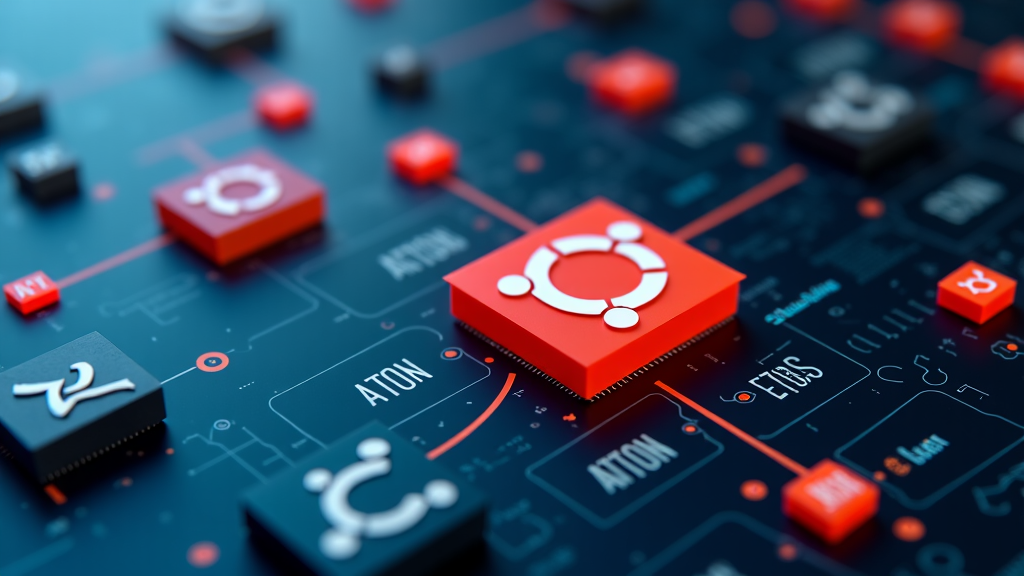
Ubuntu Performance Optimization Techniques
As an operating system, Ubuntu is designed to provide a seamless and efficient experience for its users. However, like any other OS, it can be optimized further to improve performance. In this article, we will explore 13 techniques to enhance the performance of your Ubuntu system.
1. Update Your System
Before we dive into optimization techniques, make sure your system is up-to-date with the latest packages and security updates.
bash
sudo apt update && sudo apt full-upgrade -y
2. Disable Unnecessary Services
Some services are enabled by default but may not be necessary for your usage. Disabling them can help improve performance.
bash
sudo systemctl disable <service_name>
Replace <service_name> with the actual name of the service you want to disable.
3. Use a Faster Desktop Environment
Ubuntu’s default desktop environment, GNOME, is a resource-intensive application. Consider switching to a lighter alternative like XFCE or LXDE.
bash
sudo apt install xfce4 -y
Follow the on-screen instructions to set XFCE as your default desktop environment.
4. Configure Swap Space
Swap space can help improve performance by providing an additional layer of memory for processes to use. Configure it properly to optimize performance.
bash
sudo swapon --show
This command will show you the current swap configuration. Adjust it according to your system’s needs.
5. Enable Compressed Memory
Enabling compressed memory can help reduce memory usage and improve performance.
bash
echo "vm.compact_memory = 1" | sudo tee /etc/sysctl.conf.d/compact_memory.conf
6. Use a Faster File System
The default ext4 file system may not be the most efficient for your needs. Consider switching to XFS or another faster alternative.
bash
sudo mkfs.xfs -L <volume_name>
Replace <volume_name> with the actual name of the volume you want to format with XFS.
7. Disable Unused Drivers
Unused drivers can consume system resources and slow down performance. Disable them using the modprobe command.
bash
sudo modprobe -r <driver_name>
Replace <driver_name> with the actual name of the driver you want to disable.
8. Configure TCP/IP Settings
Properly configuring your TCP/IP settings can help improve network performance and overall system speed.
bash
echo "net.ipv4.tcp_window_scaling = 1" | sudo tee /etc/sysctl.conf.d/tcp_window_scaling.conf
This will enable TCP window scaling, which can help improve network performance.
9. Increase the Number of MPTable Entries
Increasing the number of mptable entries can improve CPU and disk I/O performance.
bash
echo "vm.max_map_count = 1000000" | sudo tee /etc/sysctl.conf.d/max_map_count.conf
This will increase the number of mptable entries to 1 million, which can help improve system performance.
10. Configure Disk Caching
Properly configuring disk caching can help reduce disk I/O wait times and improve overall system performance.
bash
echo "vm.dirty_writeback_centisecs = 50" | sudo tee /etc/sysctl.conf.d/dirty_writeback_centisecs.conf
This will configure disk caching to write back data every 50 centiseconds, which can help reduce disk I/O wait times.
11. Increase the Number of IRQs
Increasing the number of interrupts per second (IRQs) can improve CPU and system performance.
bash
echo "vm.max_irqs = 1024" | sudo tee /etc/sysctl.conf.d/max_irqs.conf
This will increase the maximum number of IRQs to 1,024, which can help improve system performance.
12. Disable Unnecessary Kernel Modules
Some kernel modules may not be necessary for your usage and can consume system resources. Disable them using the modprobe command.
bash
sudo modprobe -r <module_name>
Replace <module_name> with the actual name of the module you want to disable.
13. Monitor System Performance
Monitoring system performance is crucial to identify bottlenecks and areas for improvement. Use tools like htop, sysdig, or collectd to monitor your system’s performance.
bash
sudo apt install htop -y
This will install the htop command-line interface, which provides a real-time view of system resource usage.
By implementing these 13 Ubuntu performance optimization techniques, you can significantly improve the speed and efficiency of your Ubuntu system. Remember to regularly monitor your system’s performance and adjust these settings as needed to ensure optimal performance.



